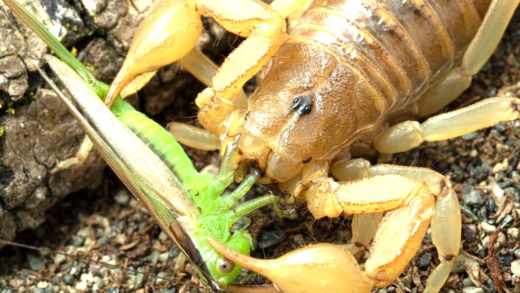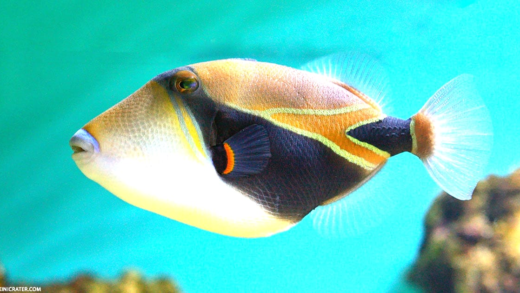Mantis shrimp are remarkable marine creatures known for their incredible punching power and unique vision capabilities. They thrive in warm, shallow waters and possess vibrant colors for communication and camouflage. Their extraordinary vision allows them to see polarized light and a wide spectrum of colors, making them exceptional hunters. Observing mantis shrimp in the wild requires caution; maintaining distance and avoiding interaction is essential for safe encounters.
Where to Find Mantis Shrimp
Mantis shrimp are fascinating marine creatures found primarily in warm, shallow waters. Their natural habitat includes coral reefs, sandy bottoms, and seagrass beds. These vibrant animals inhabit the Indo-Pacific region, from the Red Sea to the coasts of Hawaii, showcasing their geographical distribution.
Understanding where mantis shrimp thrive is essential for marine enthusiasts and researchers. They prefer environments rich in biodiversity, providing ample hunting and shelter opportunities. Mantis shrimp often burrow in the sand or hide among rocks, making them tricky to spot.
Some popular regions for encountering mantis shrimp include:
- Great Barrier Reef, Australia
- Coral Triangle, Southeast Asia
- Caribbean Sea
By knowing their habitat, you can appreciate these unique creatures and their ecological role.
How Mantis Shrimp Punch
Mantis shrimp possess one of the most powerful punches in the animal kingdom. Their punching mechanism is a marvel of evolutionary engineering. With specialized limbs called raptorial appendages, they can strike with incredible speed and force, reaching velocities comparable to that of a bullet.
This remarkable ability allows mantis shrimp to break through the shells of their prey, such as crabs and mollusks. Their punch can generate shockwaves, stunning or killing prey instantly. The mechanics behind this are fascinating:
- **Spring mechanism**: The mantis shrimp stores energy in its forelimb muscles.
- **Rapid extension**: Upon release, the limb extends at lightning speed.
- **Impact force**: The punch can deliver over 1,500 newtons of force, enough to break glass!
Learning how these creatures can strike with such precision offers insights into their survival strategies and the evolutionary pressures they face.
The Colors of Mantis Shrimp
Mantis shrimp are not just known for their strength; they are also famous for their dazzling colors. Their vibrant appearance serves multiple purposes, including communication and camouflage. Mantis shrimp can exhibit a range of colors, from bright blues and greens to striking reds and yellows.
These colors are a result of complex pigment cells and structural coloration. The meaning behind their colors can be significant:
- **Mating displays**: Bright colors attract potential mates.
- **Territorial signaling**: Colors can indicate dominance or readiness to fight.
- **Camouflage**: Some colors help them blend into their environment, evading predators.
Understanding the significance of mantis shrimp colors enhances our appreciation of these extraordinary creatures in the animal kingdom.
Strength of Mantis Shrimp Punch
The mantis shrimp punch is not just powerful; it’s astonishingly strong compared to other creatures. With a punch that can deliver over 1,500 newtons of force, mantis shrimp can break shells and even aquarium glass. To put that in perspective, this force is equivalent to a bullet being fired from a handgun. Other animals, like the big cat or the great white shark, have powerful strikes, but the mantis shrimp’s punch is unique due to its speed and the mechanics behind it.
In the animal kingdom, few can match the mantis shrimp’s strength. For example:
- The hippo has a strong bite force, but it can’t match the speed of a mantis shrimp punch.
- A tiger’s paw strike is powerful, yet it lacks the rapid acceleration of the mantis shrimp.
- The mantis shrimp can strike faster than a speeding bullet, showcasing its unmatched capability.
This incredible strength not only aids in hunting but also serves as a defense mechanism against predators. Understanding the mantis shrimp punch allows researchers to appreciate the evolutionary adaptations that lead to such extraordinary abilities.
Can Mantis Shrimp Break Glass?
The question of whether mantis shrimp can break aquarium glass has intrigued many. The answer is yes, they can! Their punch is powerful enough to shatter glass, which poses a concern for aquarium owners. In fact, there are numerous accounts of mantis shrimp causing damage to tanks.
For aquarium enthusiasts, this means taking precautions. Here are some tips to protect your tank:
- Choose thicker glass or acrylic tanks that can withstand impacts.
- Consider tank designs that minimize hiding spots for mantis shrimp.
- Regularly monitor your aquarium for any signs of stress or damage.
Understanding the mantis shrimp’s punching power is crucial for maintaining a healthy aquarium environment. It’s essential to create a safe space that accommodates these strikingly beautiful yet powerful creatures.
Unique Abilities of Mantis Shrimp
Mantis shrimp are not just remarkable for their punching power; they also possess other unique abilities. One of the most fascinating traits is their vision. Mantis shrimp can see polarized light, which allows them to detect prey and predators in ways other animals cannot. Their eyes contain up to 16 types of photoreceptors, compared to humans who only have three. This ability gives them a unique perspective of the underwater world.
Additionally, mantis shrimp have exceptional color recognition. They can perceive colors that are invisible to the human eye, making their world incredibly vibrant. Here are some other unique skills:
- **Burrowing**: They can dig elaborate tunnels in the sand, creating safe habitats.
- **Camouflage**: Their colors can change to blend into their surroundings, aiding in stealth.
- **Social behavior**: Some species exhibit complex social interactions, communicating through color displays.
These abilities highlight the mantis shrimp’s adaptability and complexity as a species, making them a fascinating subject for study in marine biology.
Mantis Shrimp Vision
Mantis shrimp are remarkable not just for their strength, but also for their extraordinary vision capabilities. Mantis shrimp possess up to 16 types of photoreceptors, allowing them to see a spectrum of colors that is unimaginable to humans, who only have three. This unique visual system enables them to detect polarized light, which aids in spotting prey and avoiding predators.
Understanding the complexity of mantis shrimp vision reveals why they are so successful in their environments. Their eyes can move independently, providing a wide field of view. Here are some key features of their vision:
- **Color Perception**: Mantis shrimp can see colors from ultraviolet to infrared, providing a vibrant view of the underwater world.
- **Polarized Light Detection**: This ability helps them see prey that may be invisible to others.
- **Depth Perception**: Their unique eye structure offers excellent depth perception, crucial for hunting.
These visual adaptations play a critical role in their survival, helping them navigate their complex habitats and interact with other marine life effectively.
Encountering Mantis Shrimp in the Wild
Encountering mantis shrimp in their natural habitat can be an exciting experience. However, it’s essential to know how to interact with these creatures safely. Mantis shrimp can be territorial and may use their powerful punches if they feel threatened. Here are some tips for safely observing mantis shrimp in the wild:
- **Observe from a Distance**: Keep a respectful distance to avoid startling them.
- **Avoid Touching**: Do not attempt to touch or handle mantis shrimp, as they can deliver painful strikes.
- **Use Underwater Cameras**: Capture their beauty without disturbing their environment.
- **Respect Their Habitat**: Avoid damaging coral reefs or sandy bottoms where they live.
By following these guidelines, you can enjoy the beauty of mantis shrimp while ensuring both your safety and that of these fascinating creatures.





Comments are closed.